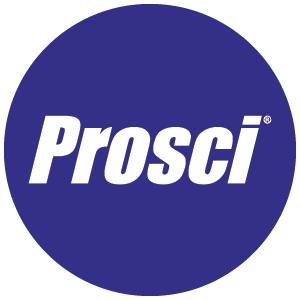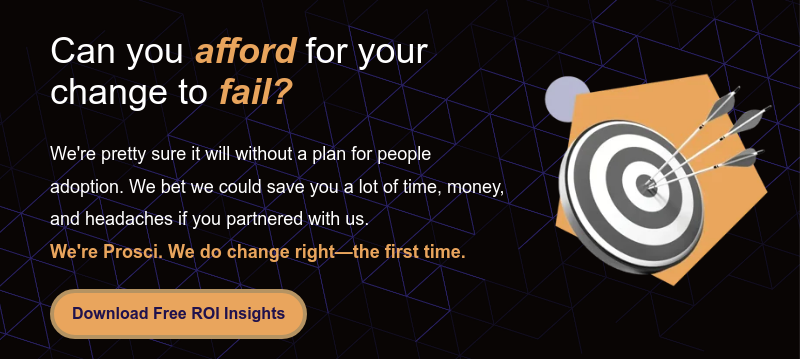Needs Assessments: Definition, Guide and Best Practices

8 Mins
Updated: August 8, 2025
Published: January 1, 2025

Ever feel like your team is learning, but not filling the knowledge gaps? You’re not alone. Without a clear understanding of what your organization really needs, it’s easy to waste time, energy and resources.
That’s where a needs assessment comes in—it’s your roadmap to identifying gaps, setting priorities, and focusing on what matters most. That’s what makes it critical to building Knowledge and Ability in your people during organizational change.
In this needs assessment guide, we explain how to conduct a needs assessment, show you how to tie it to the Prosci Methodology, and share a generic needs assessment template you can try out on a project. Let’s make your next big move the right one.
What is a Needs Assessment?
A needs assessment is a structured process for identifying and addressing gaps between current performance and desired outcomes. By gathering and analyzing information about what an organization requires—whether it’s knowledge, skills, resources or processes—a needs assessment helps you decide what areas need improving.
In tech, for instance, a needs assessment might uncover a shortage of skilled software developers or outdated project management tools. In an ERP (enterprise resource planning) environment, it could highlight training gaps around new system features. In finance, it might reveal insufficient regulatory compliance measures that require immediate attention.
Why are needs assessments critical?
Needs assessments help address skills gaps—a top concern for learning and development professionals. They provide you with a clear picture of employees’ current skills and knowledge. This helps you make informed decisions about where to allocate extra resources to close any gaps.
In change management, needs assessments are especially valuable because they clarify what employees need to learn and how they can successfully apply new behaviors to adopt new ways of working.
By understanding these knowledge gaps, you can customize learning plans that support both business goals and employee growth. Research shows that 90% of millennials consider professional development a key factor in a job, so this is especially important for attracting, retaining and engaging top talent. When organizations tailor training to individual and team needs, they create a stronger foundation for long-term success.
Needs assessments are also a key component of a structured change management methodology. When implementing a change, teams often begin with a needs assessment to help define goals and guide the implementation process. Organizations that don’t follow any particular change management methodology tend to see much lower rates of change success.
Impact of Use of a Particular Methodology on Change Management Effectiveness

It can provide clarity on resource allocation, inform stakeholder engagement, enhance training and support plans, facilitate measurement, and support continuous improvement efforts. To get the most out of this process, it's essential to focus on key elements that ensure a comprehensive evaluation.
Core Components of a Successful Needs Assessment
An effective needs assessment hinges on three things: how you gather data, how you analyze it, and how you prioritize your findings. The right data fuels informed decisions, sharp analysis uncovers meaningful insights, and strategic prioritization ensures resources drive real results.
Gathering data
A successful needs assessment starts with gathering the right information—because what you measure shapes what you achieve. Blending quantitative data for hard facts and qualitative insights for context allows you to capture the full scope of your organizational needs.
Quantitative and qualitative data can be gathered in different ways. Using multiple data-gathering techniques in tandem provides a more nuanced view of the challenges and opportunities your organization faces.
Quantitative data collection methods include:
- Surveys – Identify widespread issues and analyze trends while reaching large groups quickly.
- Assessments and skill tests – Measure employees’ proficiency levels to pinpoint knowledge gaps.
- HR and performance data – Analyze retention rates, promotions, absenteeism and productivity metrics for patterns.
- System usage analytics – Track engagement with internal tools, training modules or new processes.
- Financial reports and budget reviews – Evaluate costs, resource allocation and ROI of past initiatives.
Qualitative data collection methods include:
- Interviews – Uncover personal perspectives, challenges and motivations through one-on-one conversations.
- Focus groups – Encourage open dialogue and shared experiences to uncover collective concerns.
- Document reviews – Analyze training materials, project reports, policy documents or feedback logs for historical insights.
- Open-ended survey questions – Complement quantitative surveys with free-text responses to capture nuance.
By collecting both kinds of data through multiple data-gathering techniques, you can reduce bias and ensure a well-rounded, accurate understanding of your organization’s needs.
Analyzing data
After collecting information, the next step is turning raw data into actionable insights. Several analytical frameworks can help:
- SWOT (Strengths, Weaknesses, Opportunities, Threats) – Categorizes findings to clarify current challenges and possible advantages.
- Root cause analysis (e.g., “5 Whys”) – Digs deeper than surface-level symptoms to uncover systemic issues or overlooked opportunities.
- Trend analysis – Examines patterns over time to determine whether a need is growing, shrinking or remaining consistent.
- Data segmentation – Breaks down information by role, department or region to identify the most affected areas.
This analytical phase connects the dots between numbers and narratives, laying the groundwork for targeted, meaningful recommendations.
Prioritizing needs
Once you know where improvements are needed, you’ll need to establish clear priorities to ensure you address what matters most. Key criteria might include:
- Impact – Defines how significantly a particular need affects organizational and personal performance.
- Feasibility – Considers how realistically and quickly a need can be addressed with the available resources.
- Stakeholder input – Gauges commitment across teams, highlighting needs that are both urgent and widely supported.
- Risk assessment – Evaluates potential obstacles or unintended consequences associated with each need.
Each of these criteria brings you closer to fully understanding how a change will impact the people involved—whether they can realistically implement the new solution, how they feel about it, and the potential challenges they might face. This insight shapes your change strategy and guides the development of an effective change management plan.
However, understanding these factors isn’t enough—leaders and sponsors play a critical role in ensuring change takes hold. Too often, sponsors focus on technical fixes while overlooking the human elements that determine whether new initiatives truly stick. When you help them prioritize people, they can avoid this common pitfall and drive long-term success.
Sponsor Challenges

By recognizing the importance of both tangible and human factors, you can allocate resources effectively and position your organization for sustainable, long-term success.
Steps to Conduct a Needs Assessment
Conducting a needs assessment is a strategic process that uncovers what drives successful change. Each phase builds on the last, transforming insights into action. By keeping your organization’s goals and culture at the forefront, you help ensure that every step strengthens and accelerates broader change management efforts.
Below is a high-level overview to help you shape an assessment for your project. Prosci builds a robust, specific approach to needs assessment into the Prosci 3-Phase Process to cover all needed activities and drive lasting change. But if you're just starting out with a needs assessment, this general template will help you get moving in the right direction.
1. Define objectives
Before gathering data or engaging the team, you need to clarify why you’re conducting the assessment. Here’s what you need to think about before you start:
- Set clear goals – Identify the specific areas you want to examine, such as knowledge gaps, resource allocation or workflow inefficiencies.
- Link to organizational strategy – Ensure your objectives reflect larger company priorities. For instance, if your organization is focusing on digital transformation, center your assessment on technology-related challenges.
- Communicate the rationale – Share the objectives with key team members to secure their commitment, explaining how the findings will inform future decisions.
Your objectives set the course for your needs assessment. Clearly defining them helps every step drive meaningful results.
2. Engage stakeholders
Collaboration fuels a strong, results-driven needs assessment. Bringing in team leads, department heads, and front-line employees ensures diverse perspectives shape the process, which leads to smarter decisions and stronger outcomes.
- Open communication channels – Use meetings, email updates and internal platforms to invite feedback and keep everybody involved informed.
- Conduct employee interviews and workshops – Schedule discussions with impacted people to dig into specific issues. These sessions can clarify data findings and uncover new insights.
- Encourage cross-functional dialogue – When teams with different priorities communicate effectively, they can identify shared challenges and potential synergies, enhancing the overall impact of the assessment.
- Collect data – At this stage you can collect data discussed earlier. Make sure to collect multiple types of data through more than one method for the best results.
Bringing the right voices into the process ensures your needs assessment is thorough, strategic and built for real impact.
3. Collect data
Once the objectives are set and your teams are engaged, the next step is to gather data that will inform your decisions.
- Balance breadth and depth – Surveys and system analytics provide broad trends, while interviews and focus groups capture detailed perspectives.
- Ensure alignment – Focus data collection on areas that directly support your objectives and organizational priorities.
- Minimize bias – Use multiple methods to validate findings and get a clearer picture of your organization’s needs.
By gathering a mix of hard data and contextual insights, you ensure that your needs assessment leads to meaningful, data-driven action.
4. Develop an action plan
The next step is to turn insights into actionable recommendations. This involves looking at the data to see where the biggest gaps and opportunities lie and prioritizing tasks accordingly.
- Analyze your data – Once you have all your data, you can organize and analyze it to find meaningful patterns.
- Outline key initiatives – Based on your analysis, decide which areas need the most urgent attention. For example, if training gaps are undermining performance, create a plan to roll out targeted learning programs.
- Set realistic timelines – Consider resource availability and potential constraints, balancing quick wins against longer-term strategies.
- Align with organizational goals – Ensure each recommendation supports the company's broader direction, whether that’s growth, innovation or operational efficiency.
With your plan in place, you’re set up to take action.
5. Implement and evaluate
The final step involves putting your plan into action and measuring its impact.
- Pilot and refine – Start with a smaller group to test new solutions, allowing you to make adjustments before a full-scale rollout.
- Monitor progress – Use quantitative metrics (e.g., productivity, cost savings) and qualitative feedback (e.g., employee satisfaction) to gauge effectiveness.
- Iterate for continuous improvement – Gather lessons learned and feed them back into the assessment cycle, ensuring your organization remains agile and responsive to evolving needs.
Applying a comprehensive needs assessment to any change helps you achieve meaningful results. But successful implementation depends on empowering people through the change.
Integrating sound change management principles, such as those laid out in the Prosci ADKAR® Model, helps people understand the "why" behind the change and build desire to support it. And they'll develop knowledge and skills they need to adopt the change in their work for the long term. With a structured change management approach, your needs assessment becomes a catalyst for real, lasting progress.
Prosci ADKAR Model

Incorporating Prosci Change Management Principles
Integrating change management principles into your needs assessment can elevate a simple diagnostic tool to one that helps people adopt and use changes. A well-structured assessment ensures that the people impacted by change are equipped to move forward.
One of the key components of the Prosci Methodology is our ADKAR Model, as mentioned above. Needs assessments are especially relevant to the Knowledge and Ability elements of ADKAR because they identify critical gaps in your team's understanding and skills.
Integrating the Prosci ADKAR Model
Knowledge: Knowledge is the foundation of effective individual change—it ensures employees understand what’s changing and how to adapt. As you conduct your needs assessment, focus on identifying the specific knowledge gaps that exist among employees. This involves analyzing current competencies against the skills required for upcoming changes. For example, if a new software is being implemented, assess employees' previous experience with similar systems to tailor training accordingly.
Ability: Ability is where knowledge turns into action. It determines whether employees can confidently apply what they’ve learned. To ensure successful implementation, evaluate employees' ability to apply the knowledge they’ve acquired effectively. You can do this by observing performance metrics and gathering feedback on how well employees are adapting to the new changes. Consider implementing pilot programs or simulations to assess the real-time application of skills in a controlled environment. This hands-on approach can reveal additional training needs and help refine your support strategies.
Using Prosci research-based tools
Backed by decades of research, the Prosci Methodology is built on evidence-based best practices in change management. Reports like our Best Practices in Change Management provide data-driven insights to strengthen your approach.
Using a proven, structured methodology ensures your change management efforts are grounded in research, not guesswork. Until you're ready to adopt a complete methodology, you can test out some common approaches using free Prosci resources designed for change professionals who are just starting out.
Explore our foundational guide on how to use a readiness assessment (with free basic template), learn about Prosci’s Change Management Plans (with free high-level template), and download a general needs assessment to try out on your next project.
How to Use Your Needs Assessment Template
To help streamline your needs assessment process, we’ve provided a customizable, generic needs assessment template. This tool will guide you through each step—from defining objectives to prioritizing action items—so you can make data-driven decisions with confidence.
Understanding the Structure of the Template
The template is designed to walk you through the key components of a basic needs assessment:
- Objective setting – Define the purpose of your assessment. Are you aiming to improve project success rates by identifying skill gaps? Clarifying objectives ensures focus and direction from the start.
- Stakeholder identification – You may have an idea of who should be involved, but this section ensures no critical voices are overlooked.
- Data collection – The right method—surveys, interviews, focus groups or document reviews—can make or break your assessment. This section helps you choose the best approach for gathering meaningful insights.
- Analysis framework – Collecting data is easy, but making sense of it is where the real work begins. Use tools like SWOT or gap analysis to turn findings into actionable opportunities.
- Prioritization matrix – Not all needs carry the same weight. Rank issues by impact (how critical they are) and feasibility (how easily they can be addressed) to ensure you focus on changes that drive real results.
Using a structured template simplifies the process, but the real value of a needs assessment lies in how you apply its findings. The insights you uncover should inform not only what needs to change but also how to implement that change in a way that resonates with the people involved.
Understand Needs by Prioritizing People
Effective needs assessments are about more than identifying gaps—they’re about aligning resources and solutions with the people who make change possible. By integrating the research-backed Prosci change management principles, you can make your assessments actionable, impactful and focused on building a stronger organization.





